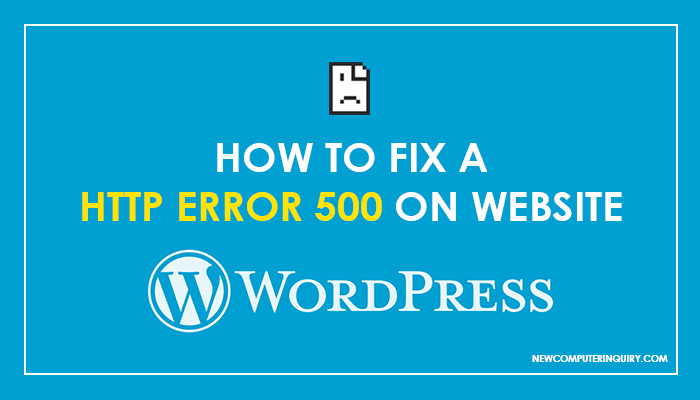Every so often you may come across a blank page that says HTTP Error 500. This error is very annoying and can put a halt to any online business operation in an instant. To fix this problem, below we will go over some methods that will get your website back up and running.
Fixing a HTTP Error 500
Ordered from simple to complex, below are methods to fixing a HTTP Error 500.
Method #1 – Temporarily Disabling the .HTACCESS file
Problem:
Your .HTACCESS file has a line of code in it preventing the website from loading. This particular entry could be made from one of your plugins, themes, or an outside influence.
Solution:
To disable the .HTACCESS file, simply:
- Log into your cPanel, Plesk, or Web Host Management Dashboard
- Goto File Manager
- Locate the .HTACCESS file and rename it by adding the following extension .bak
- Your file should look like this: .htaccess.bak
Method #2 – Increasing PHP Memory Limit
Problem:
Your website load is heavy, due to certain plugins or your active theme. When you reach or exceed the PHP memory limit, you may experience a HTTP Error 500.
Solution:
- Open notepad or a text editor on your computer.
- Input this line of code: memory=128MB
- Save the file as php.ini
- Log into your cPanel, Plesk, or Web Host Management Dashboard
- Goto File Manager
- Upload the php.ini file
Method #3 – Temporarily Disabling Plugins
Problem:
One or more of your plugins may have been corrupted, out-of-date, or incompatible with your version of WordPress.
Solution:
- Log into your cPanel, Plesk, or Web Host Management Dashboard
- Goto File Manager
- Goto Wp-Content -> Plugins
- Rename the plugins folder to plugins.off
- If the Error 500 disappears and your website is loading, rename your plugins folder back to default “plugins”.
- Enter your plugins folder and rename all of the folders by adding .off to the end. Enable (remove “.off”) from each plugin one by one until you no longer receive the Error 500 again.
- Delete the plugin/folder that is giving you the problem.
Method #4 – Updating to a newer or latest version of PHP
Problem:
Your web server may be outdated and you are using an older version of PHP. Either your WordPress Core, Themes, Plugins, or a combination of all 3 no longer support the older PHP version.
Solution:
Update your PHP to the latest version. Using 5.6 or higher is recommended. We recommend using a web host that supports 7.0 or higher, as 5.6 will eventually be phased out.
- Log into your cPanel, Plesk, or Web Host Management Dashboard
- Look for “PHP” or Programming Languages
- Select PHP Version 5.6 or Higher
- Click Save or Update.
Method #5 – Updating Core WordPress Files
Problem:
Your existing WordPress files are out-of-date, a file is missing or corrupt, or one or more of your files have been compromised.
Solution:
- Log into your cPanel, Plesk, or Web Host Management Dashboard
- Goto File Manager
- Delete ONLY the following folders: wp-admin and wp-includes
- With fresh files downloaded from the official WordPress website, re-upload both folders.
- Upload and overwrite all existing files in the main directory. DO NOT touch the wp-content folder.
Still having trouble getting your website to load? We recommend contacting your web manager or your web hosting company, they can diagnose and fix the problem. Any other questions, feel free to sound off in the comment section below.
